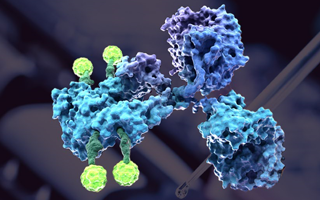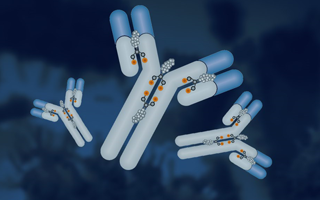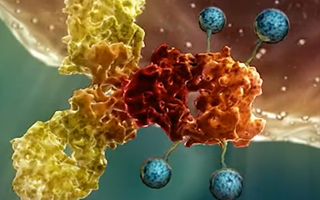Chloroplast Positioning Intrabody Development Service
Creative Biolabs has established Super™ intrabody development platform for chloroplast positioning intrabody development. With years of experience and accumulation in biological areas, our scientists are able to identify chloroplast residing motifs with various strength and specificity to satisfy the varied requirements.
Chloroplast Positioning
As a specialized organelle in plant and algal cells, chloroplast is widely accepted to have evolved from free-living cyanobacteria through endosymbiosis and mainly functions to conduct photosynthesis. Although chloroplast retains its own semi-autonomous genome with a coding capacity of approximately 100-200 genes, two to three thousand chloroplast proteins [chlorophyll a/b binding protein (Cab), biotin carboxyl carrier protein (BCCP), protochlorophyllide oxidoreductase A (PORA), DnaJ-J8, tocopherol cyclase (TOCC), ferredoxin-dependent glutamate synthase 2 (GLU2), etc.] are still synthesized in the cytoplasm and sorted back subsequently to the chloroplast through two chloroplast membranes at least.
During the homing process, the N-terminal transit peptides of nuclear-encoded chloroplast proteins (the largest class of targeting sequences in plants) are required functionally and critical for a stroma or a thylakoid targeting. Particularly, the majority chloroplast targeting proteins pass through the TOC (translocon on the outer membrane, including Toc34, Toc70, Toc75, Toc86/159) or TIC (translocon on the inner membrane, including Tic20, Tic22, Tic40, Tic55, Tic110) complexes with cleave-off of signal peptide in the stroma or not (envelope targeting).
Since the acquisition of transit peptide of chloroplast protein is one of the most critical milestones in its evolution, all the known transit peptides possess a high preference for hydroxylated amino acids (i.e., Ser, Thr, Pro) with or without a cleavable transit peptide at N-terminus of the protein precursor generally, some exceptions at C-terminus. Meanwhile, the transit peptide sequences manifest highly divergent in peptide length, composition and organization at a primary structural level, and also contain multiple domains for interaction with envelope lipids, chloroplast receptors, and the stromal processing peptidase. Specifically, Arabidopsis possesses almost 3000 chloroplast-targeted precursors accounting for 13% gene products, which indicates the marvelous plasticity of transit peptide design by nature.
Other Anchoring Modification Options provided by Creative Biolabs
Including the chloroplast, Creative Biolabs can also develop specific positioning antibody for a variety of destination, which including but not limited to:
| Extracellular Space | Extracellular Plasma Membrane | Intracellular Plasma Membrane | Cytoplasm |
| Nucleus | Endoplasmic Reticulum | Golgi Apparatus | Mitochondria |
| Chloroplast | Lysosome | Peroxisome | Vacuoles |
Creative Biolabs harbors the most professional and sophisticated platforms, which are aiming at producing custom intrabody with the most advanced technologies. If you are interested in developing novel Intrabody and position to the chloroplast, please feel free to inquire us for more details.
All of our antibody products and services can only be used for preclinical research studies. Do not use them on humans.
Related Services:
- Extracellular Space Positioning Antibody Development
- Extracellular Plasma Membrane Positioning Antibody Development
- Intracellular Plasma Membrane-Anchored Intrabody Development
- Cytoplasm Positioning Intrabody Development
- Nucleus Positioning Intrabody Development
- Endoplasmic Reticulum Positioning Intrabody Development
- Golgi Apparatus Positioning Intrabody Development
- Mitochondria Positioning Intrabody Development
- Lysosome Positioning Intrabody Development
- Peroxisome Positioning Intrabody Development
- Vacuole Positioning Intrabody Development

Welcome! For price inquiries, please feel free to contact us through the form on the left side. We will get back to you as soon as possible.
Contact us
USA
Tel:
Fax:
Email:
UK
Tel:
Email:
Germany
Tel:
Email:







